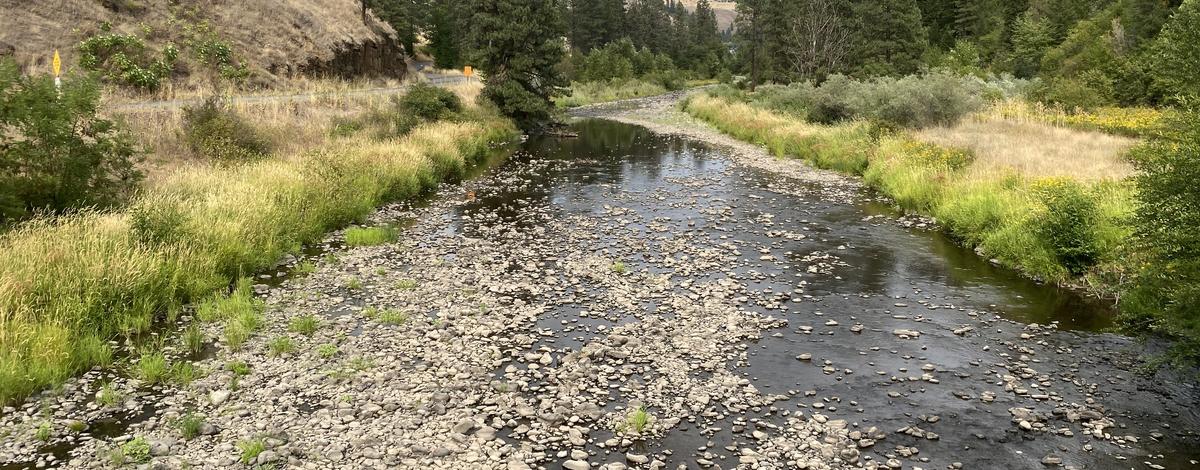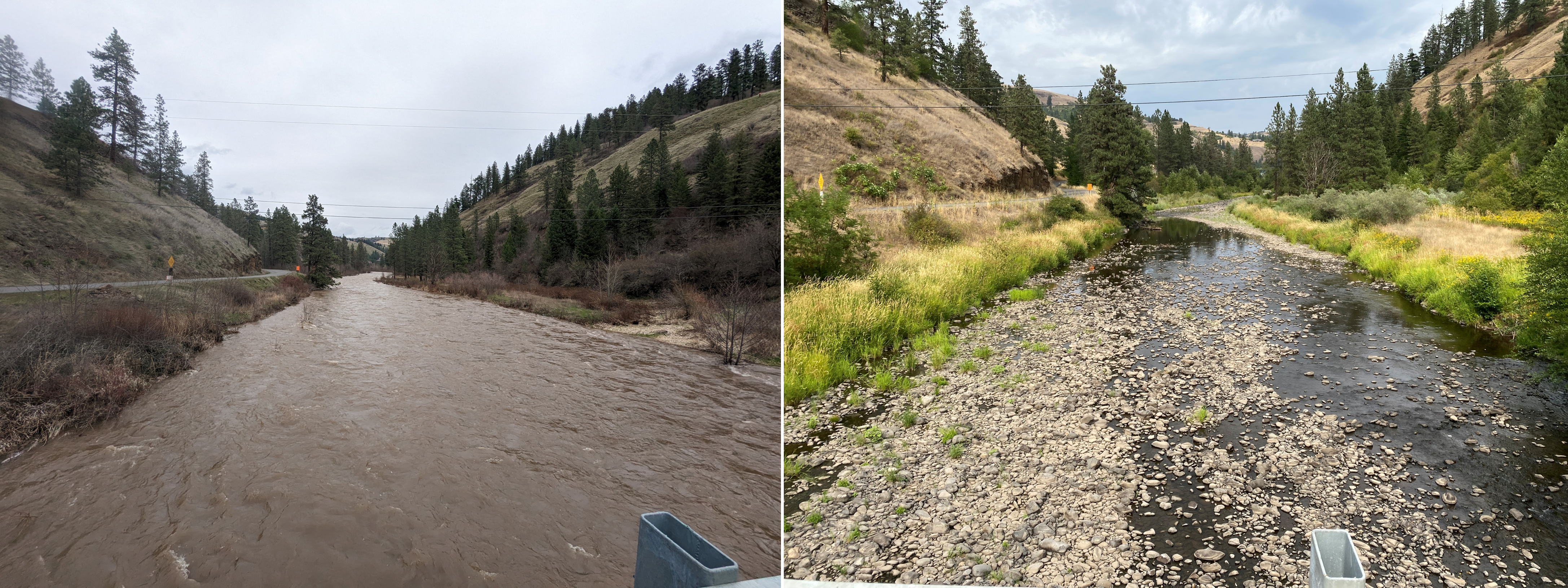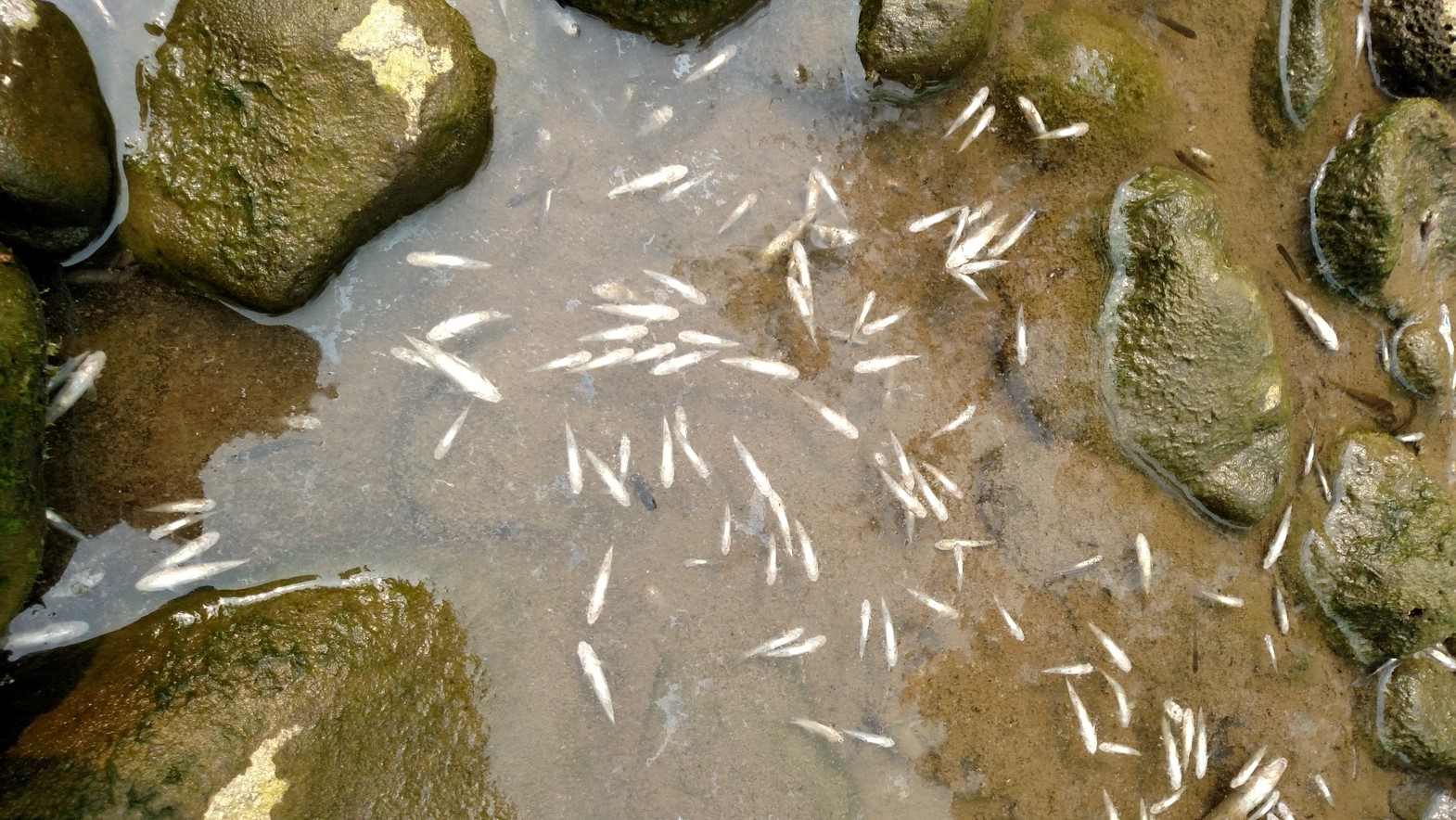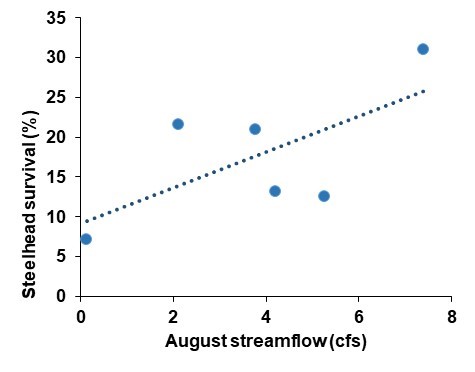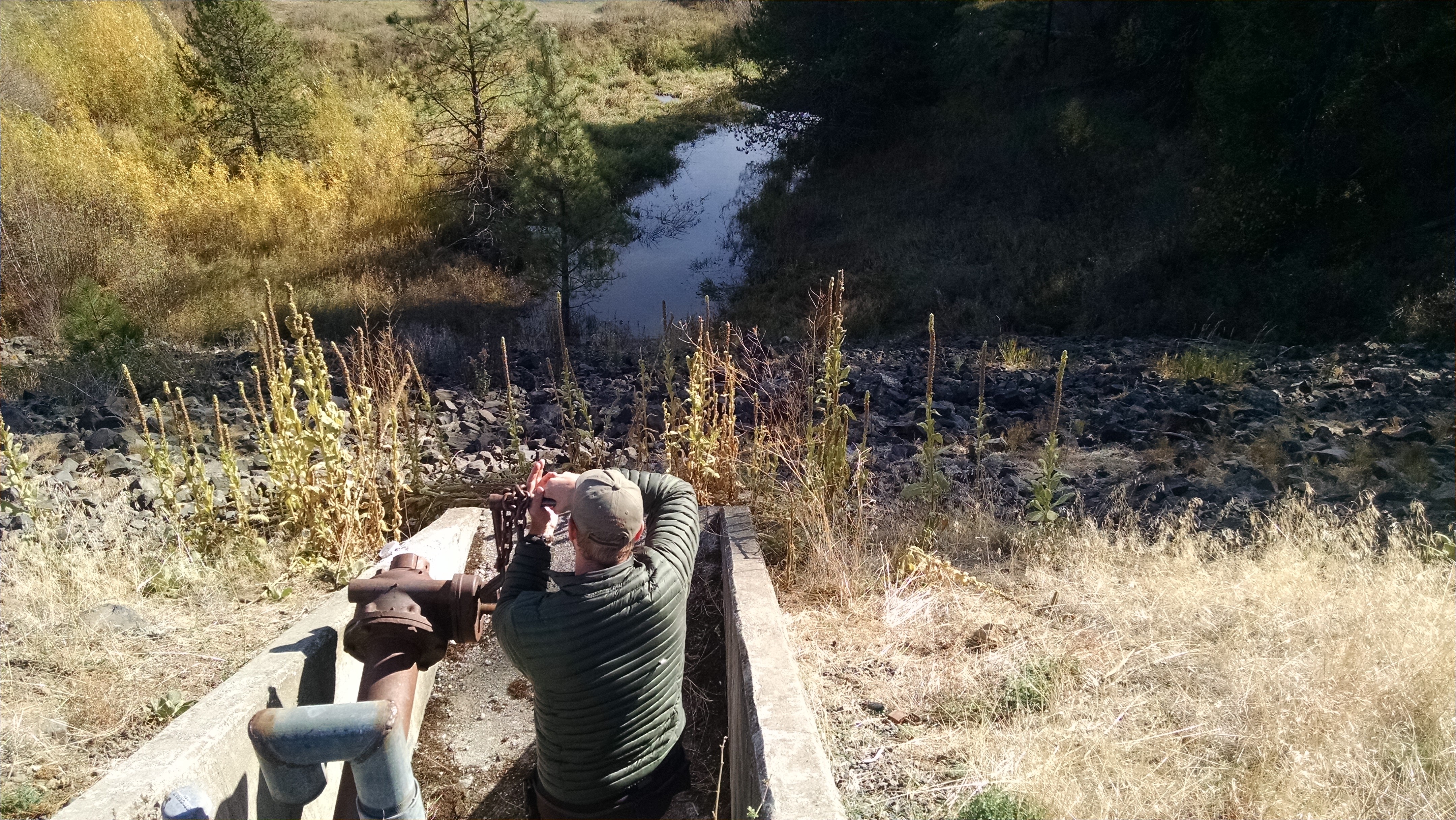The Potlatch River in northern Idaho receives most of its annual precipitation from December to June. Thus, there is a natural pattern of high flows in the late winter/early spring followed by decreasing flows through the summer.
However, thousands of acres of timber and meadow areas have been converted into cropland, which has altered flow patterns that resulted in higher and more concentrated peak springtime flows and lower summer base flows compared to historical flow patterns. Presently, base flows in the Potlatch River are severely limited with many tributaries becoming de-watered or intermittent during the summer months.

